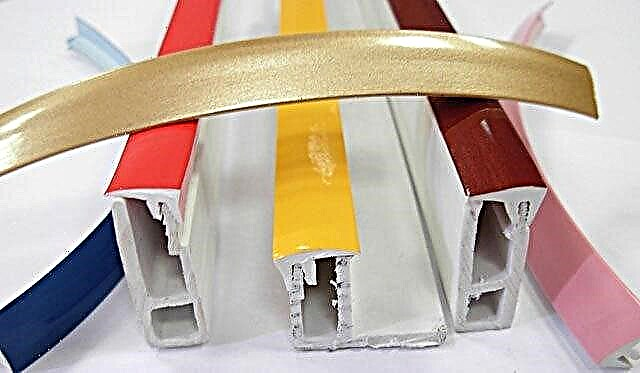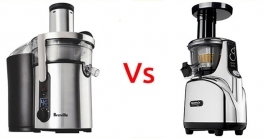| Juicer Name | Price |
|---|---|
| KITFORT KT-1102 | from 5 790 p. |
| Redmond rj-930s | from 5 250 p. |
| KITFORT KT-1104 | from 11 289 p. |
| KITFORT KT-1101 | from 5 589 p. |
| Panasonic MJ-L500 | from 10 890 p. |
A modern screw juicer is one of the most popular household devices for obtaining juice from vegetables and fruits. Everyone knows the useful properties of freshly squeezed juices from natural products, so the juicer in the house is a source of health. At the same time, screw types of juicers have several advantages over centrifugal and citrus models. Such units allow you to get juice from any fruit, berries and even herbs.
Choose a juicer: centrifugal or auger?
In screw models, a special cylinder with spiral ribs is used to separate juice, similar to that used in meat grinders. Such units are quieter and consume less energy than centrifugal ones. Plus, the devices work with almost any product.
In online stores in Moscow there are a large number of models. Devices are divided into mechanical and electrical. In the first case, control is carried out using rotary knobs, such models are simple and inexpensive. Electric - more convenient to use, since they require minimal user intervention, and the process of squeezing the juice as automated as possible.
Also, screw juicers are divided into horizontal and vertical, depending on the location of the housing. The principle of horizontal operation is similar to a classic meat grinder. The purpose of horizontal type screw juicers is to obtain juice from herbs. Places on the working surface of such devices occupy more than vertical ones. Vertical models squeeze juice faster and better. For domestic purposes, vertical models are often purchased.
What to look for when choosing
The buyer should pay attention to the power, functionality, size and material of which the unit is made. The screw rotational speed and the ability of the device to work with solid raw materials depend on power. So, to buy a screw juicer with a capacity above 1 kW makes sense for professional use in restaurants.
Case material: plastic or metal. This indicator affects the appearance and strength of the device. Models with a plastic case are cheaper and lighter, but their strength is lower. The capacity of dishes for juice determines how much juice can be squeezed in one go. Additional functions increase the usability of the screw juicer, but the price of such models is higher. Among the popular solutions: a drop-stop system, reverse, auto-pulp from a screw juicer, the presence of a round neck for a pusher, a foam separator.
How it works?
Centrifugal, centrifugal - this is a usual, familiar juicer, in which fruits or vegetables are laid through the neck and in which they fall into a centrifuge, where they are crushed with knives. Under the influence of centrifugal force, the juice is separated from the fibers, after which it is sent to a crane or a special container, and the cake to a waste container.
Depending on the model, centrifugal juicers can be more or less perfect. The result (how much juice you get, how quickly and how dry the waste will be) is affected by engine power and filter quality, as well as some design features. Almost all manufacturers try to supply modern models with a wide (70-75, less often 80 mm) neck, in which a whole apple is placed. You have to understand that the “whole apple” format is a bit arbitrary: apples are different, but carrots are absolutely perfect “come in and go out”. But anyway: you don’t have to cut apples (pears, beets, etc.) into slices, slices and slices, at most - into half-quarters. Many models have two operating speeds: for hard and soft fruits - and a drop-stop system, that is, a tap lock or the ability to turn it up so that the remaining drops of juice do not leak.
Enlarged neck for a whole apple
Are there any pluses?
The main and very serious plus is the speed of work. Centrifugal juicers are indispensable for processing a large number of fruits or vegetables: for the harvest - that’s it! Even normal-sized juicers are faster than augers.
The second plus (however, for some it is a minus) is pure juice with almost no pulp. Of course, a foam is formed during the spin cycle, but it can be separated mechanically using a separator (as a rule, it is built into a jug for juice).
Cons of Centrifugal Juicers
The disadvantages, by the way, are not at all those on which the advertising of screw models is based. Well, they say that the juice is supposedly heated, and vitamin C is destroyed - no, squeezed juice never turns hot (vitamin C is destroyed at temperatures above 60 degrees). What is the reality? When grinding, for example, apples, when the centrifuge rotates at a speed of several thousand revolutions per minute, and the knives cut the apple “into rags”, the area of contact between the apple and oxygen increases many times, and yes, oxidation occurs, which destroys vitamin C. But it all has the value for the juice that was “squeezed and drank”, and when the juice is stored in a transparent bottle, even in the cold after a few hours, there will be little left of vitamin C - regardless of which juicer squeezed the juice.
But there are other limitations. Firstly, in such models more often than in “slow”, smoothly switched on and not so powerful auger motors, motors burn out. Secondly, centrifugal juicers are very noisy. Thirdly, they can’t “reap” everything in a row: for example, berries with pits, pomegranates, herbs, high fiber and very hard and fiber products. Fourth, and also in the main thing - the centrifuge juicer is difficult to wash: the flesh clogs the filter holes - they are very small. There are exceptions - for example, Philips models with a polished filter, which, according to the manufacturer, can be washed without problems.
Why are screw juicers the best?
Versatility. There was a time when only centrifugal juicers characterized this term. Despite the fact that they are sometimes called today, with the advent of screw varieties, the "title" has rightfully been assigned to them. The reason is compelling: devices that are structurally similar to a meat grinder can process a wide variety of berries, vegetables, herbs, fruits of various hardness, and even nuts, seeds, soybeans without problems. And not only the liquid can come out from under the screw with the filter, but also all kinds of mashed potatoes, sorbets, sorbets and much more (depending on the model and configuration).
Environmental friendliness. In the screw juicers, the technology of cold low-speed extraction is used, in which the juice in the working chamber does not heat up (greasy plus in comparison with high-speed centrifuges), almost does not come into contact with air. As a result, at the output we get a really useful product with the highest possible concentration of vitamins, minerals, amino acids and with the most natural, tasteless taste. In addition, the oxidation process slows down, due to which freshness is longer, the shelf life is increased. Although more often everything is immediately drunk, as they say, "without departing from the cash register."
Efficiency. The demand for screw juicers is to a large extent due to the extremely high extraction efficiency. And this is the largest possible yield of juice, a very dry cake is “precipitated”. However, even in a heavily squeezed mass, fiber is usually enough. It is no coincidence that many users do not throw out the flesh, but make pastille, fruit or vegetable cutlets out of it. How many culinary fantasies can be realized with a good imagination?
Vertical
The name itself reflects the orientation of the auger in space and moves away from visual similarities with meat grinders. The squeezing mechanism extended upwards provides compactness, so valuable in the conditions of limited space. Vertical screw juicers are in the greatest demand, as they are found in all price segments from budget to premium.
Horizontal
These devices, on the contrary, are very similar to a meat grinder. The auger is in place, crushing and pushing the wet mass forward, but instead of knives, a mesh (or grating) filter is used, through the holes of which the juice is literally squeezed out, flows through the lower outlet into the glass, and the cake continues to move horizontally, leaving through a special nozzle (sometimes with pressure regulator).



